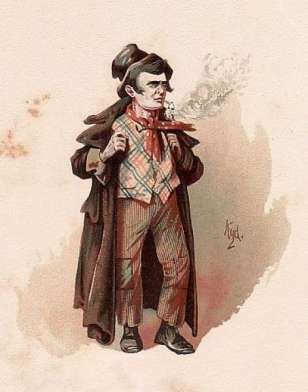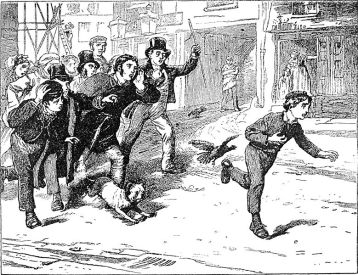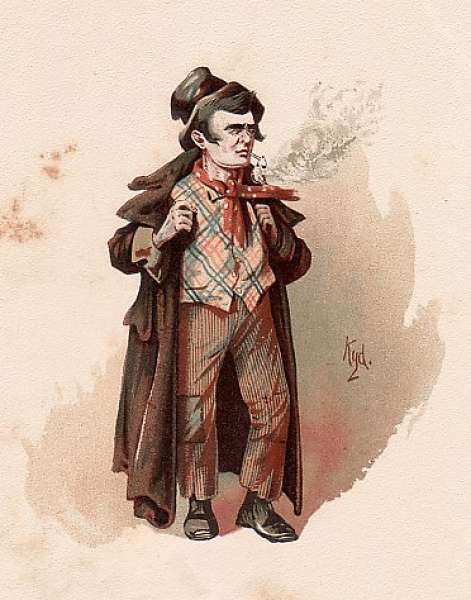
The Select Committee on Criminal and Destitute Juveniles; together with the proceedings of the committee provides details of juvenile boys during the mid 19th Century. In these interviews, it was shocking to see the emotive discussion from these young children and the remorse they showed for such petty crimes. To describe these boys as destitute provides the basis that they are “without means of subsistence; lacking food, clothing, and shelter”. It is evident within this report that many of the young boys were orphaned and turned to crime (influenced by other juveniles) as a means of providing for themselves. The report gave an indication of the backgrounds of these children through the use of what one can assume to be probing questions, that relate to their story, aswell as the crime/s they committed. It is evident that this report has a softer tenor as it deals with younger children, as opposed to a report for an adult criminal.
The questions asked to these children seem to follow a more compassionate tone, as the boys are allowed to give an indication to their life story, prior to turning to crime. It seems that the courts and prisons are willing to openly understand as to why the boys should turn to crime and many of these stories follow a similar pattern – either orphaned children or drunken parents. Most of the cases open with “Neither father or mother” or “mother [or] father dead”. For such young children, these factors dramatically impact their lives. Out of the cases I looked at; 7/12 of the children had come from well educated backgrounds, but due to circumstances beyond their control (i.e. the passing of parents) these children had to turn to crime in order to make a living for themselves.

One story that really resonated with me was that of a 15 year old boy, who had been in prison 7 times since 1844-1852 and had therefore been involved in crime since he was 7 years old. He was one of seven children within this family, with his 12 year old brother also involved in crime. The background to this child’s story was that “Both Father and Mother are always drunk; mother drunk everyday”. The children would rarely have meals in the day as their parents would be too intoxicated to do so. Despite this, the children still went to school and were educated. The cause of the crime lies with the parents in this instance as they had abandoned their child and left him to fend for himself. The prison guard describes the boy as “behaving remarkably well” which implies a great sense of remorse that this child has and that his actions were his only option for survival.
Upon further research into juveniles within the 19th Century, it is evident to see that these boys were treated remarkably well in comparison to other juveniles who committed similar crimes. Upon looking at Capital Punishment in the UK, some young people were hung and executed for similar crimes. It is shocking to see how in different areas of the country, the crime punishment differs so greatly.
- 15 year old Henry Lovell was hanged at Newgate on the 26th of November of the same year for highway robbery.
- Three teenage boys were executed together for highway robbery outside Newgate in March 1821, James Reeves who was 17, Joseph Johnson 18 John Davis who was also 18.
- 17 year old William Thompson was hanged at Newgate for highway robbery on the 25th of September 1821.
- 16 year old Benjamin Glover was hanged in Somerset on the 1st of May 1822 for stealing in a dwelling house.
References:
Clarke dodger. (2017). [image] Available at: http://www.crazy8press.com/2013/09/11/my-next-novel-is-for-amazon-books/ [Accessed 23 Nov. 2017].
Juvenile Boy. (2011). [image] Available at: https://commons.wikimedia.org/wiki/File:Oliver_Twist_-_Samh%C3%A4llsroman_-_Sida_050.jpg/ [Accessed 24 Nov. 2017].
Oldbaileyonline.org. (n.d.). Old Bailey Online – The Proceedings of the Old Bailey, 1674-1913 – Central Criminal Court. [online] Available at: https://www.oldbaileyonline.org/ [Accessed 25 Nov. 2017].
Report from the Select Committee on Criminal and Destitute Juveniles. (1852). [London]: House of Commons, pp.406-427.
Stern, M. (n.d.). Children & juvenile executions. [online] Capitalpunishmentuk.org. Available at: http://www.capitalpunishmentuk.org/child.html [Accessed 23 Nov. 2017].

